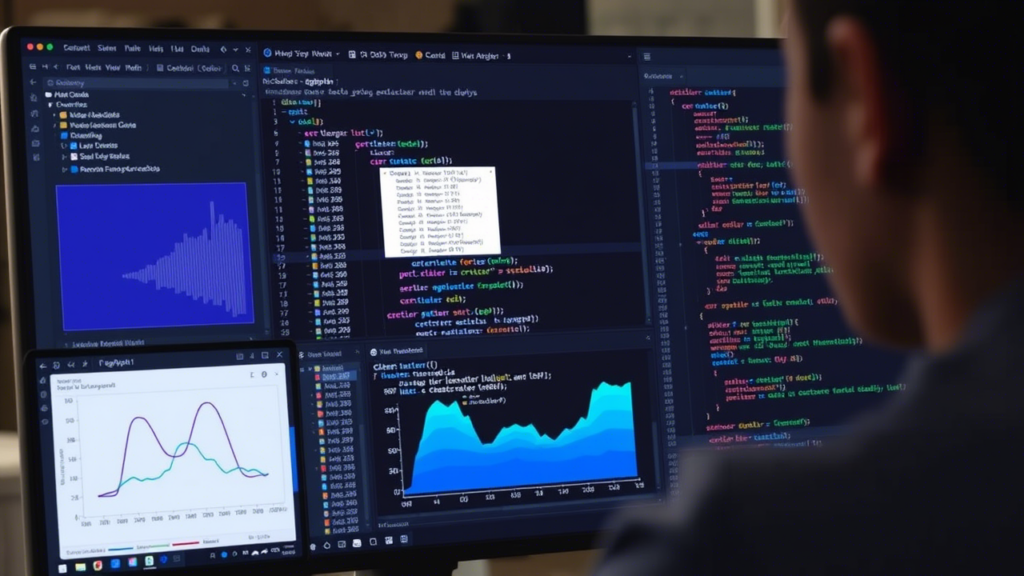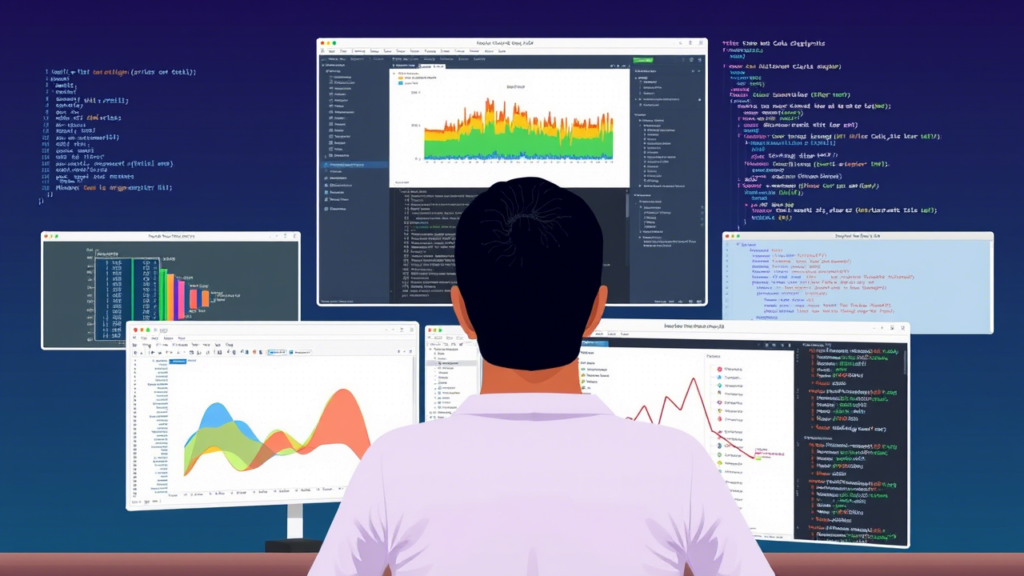Data science has become one of the most sought-after fields in the modern world, and mastering tools like R can open doors to countless opportunities. If you’ve ever wondered how to get started or how to refine your skills, understanding “R stuffers” is a great place to begin. This comprehensive guide will walk you through everything you need to know about R stuffers, from installation to advanced usage, ensuring you have the knowledge to excel in data science.
What Are R Stuffers?
At its core, the term “R stuffers” refers to individuals who work extensively with the R programming language for statistical analysis, data visualization, and machine learning. These professionals are often data scientists, statisticians, or researchers who leverage R’s robust capabilities to derive insights from complex datasets.
However, “R stuffers” isn’t just limited to experts; it also includes beginners eager to learn and grow their skills in this versatile language. Whether you’re analyzing survey results, building predictive models, or visualizing trends, R provides the tools you need to succeed.
R is an open-source programming language specifically designed for statistical computing and graphics. It’s widely used across industries such as finance, healthcare, marketing, and academia because of its flexibility and extensive library of packages. As an R stuffer, you’ll find yourself working with functions, scripts, and libraries that make handling large datasets both efficient and intuitive. The term “stuffers” highlights the dedication required to master R, as well as the ability to “stuff” or incorporate vast amounts of data into meaningful outputs.
Why Choose R for Data Science?
If you’re new to data science, you might be wondering why so many professionals choose R over other programming languages like Python. While Python is undeniably powerful, R offers unique advantages that make it indispensable for certain tasks. First and foremost, R was built with statisticians in mind. Its syntax is tailored to handle statistical computations seamlessly, making it easier for users to focus on the analysis rather than coding intricacies.
For instance, R comes preloaded with a wide array of statistical tests, probability distributions, and graphical techniques. This means you don’t need to write extensive code to perform common analyses like regression, clustering, or hypothesis testing. Additionally, R boasts a thriving community of developers who contribute to its ever-expanding repository of packages. These packages extend R’s functionality, allowing R stuffers to tackle specialized tasks such as text mining, time-series forecasting, and geospatial analysis.
Another reason to choose R is its emphasis on reproducibility. In fields like academia and research, being able to reproduce results is crucial. R’s scripting capabilities ensure that every step of your analysis is documented, making it easy to revisit and verify your findings. This transparency not only builds trust but also enhances collaboration among teams.

Getting Started with R: Installation and Setup
Before diving into the exciting world of R stuffers, you’ll need to set up your environment. Thankfully, installing R is straightforward and free. The first step is to download the base R software from the Comprehensive R Archive Network (CRAN) website. CRAN hosts the latest version of R, along with documentation and additional resources to help you get started.
Once installed, consider using an integrated development environment (IDE) like RStudio. RStudio is widely regarded as the go-to tool for R stuffers because of its user-friendly interface and powerful features. With RStudio, you can write code, view plots, manage files, and access help documentation—all within a single window. Plus, its debugging tools make troubleshooting a breeze.
After setting up your environment, familiarize yourself with basic commands and operations. For example, learning how to load datasets, create variables, and run simple calculations will lay the foundation for more advanced tasks. Here’s a quick overview of some essential commands:
install.packages("package_name"): Installs a specific package.library(package_name): Loads a package into your current session.read.csv("file_path"): Imports a CSV file into R.summary(data_frame): Provides summary statistics for a dataset.
These commands may seem simple, but they form the backbone of any R project. As you progress, you’ll discover countless ways to manipulate and analyze data efficiently.
Exploring R Packages: Tools for Every Task
One of the standout features of R is its vast ecosystem of packages. Think of these packages as toolkits that expand R’s functionality beyond its core capabilities. For R stuffers, mastering popular packages is key to unlocking the full potential of the language. Let’s take a closer look at some must-have packages and their applications.
1. dplyr : Data Manipulation Made Easy
When working with large datasets, cleaning and transforming data can be time-consuming. Enter dplyr, a package designed to simplify data manipulation tasks. With intuitive functions like filter(), select(), and mutate(), dplyr allows you to subset rows, select columns, and create new variables effortlessly.
2. ggplot2 : Beautiful Visualizations
Data visualization is a critical component of data science, and ggplot2 is the gold standard for creating stunning plots in R. Whether you’re plotting scatterplots, bar charts, or heatmaps, ggplot2’s layered approach gives you complete control over aesthetics and layout. For example:
library(ggplot2)
ggplot(data = iris, aes(x = Sepal.Length, y = Petal.Length)) +
geom_point(color = “blue”) +
labs(title = “Sepal vs Petal Length”, x = “Sepal Length”, y = “Petal Length”)
This snippet demonstrates how to create a scatterplot using ggplot2.
3. caret : Streamlined Machine Learning
Building machine learning models in R becomes much simpler with caret (Classification And REgression Training). This package provides a unified framework for training, evaluating, and comparing different algorithms. From decision trees to neural networks, caret supports a wide range of models, making it a favorite among R stuffers.
| Package Name | Primary Use Case | Key Functions |
|---|---|---|
| dplyr | Data manipulation | filter(),mutate() |
| ggplot2 | Data visualization | ggplot(),geom_*() |
| caret | Machine learning | train(),predict() |
By leveraging these packages, R stuffers can streamline their workflows and achieve impressive results without reinventing the wheel.
Advanced Techniques for R Stuffers
As you grow more comfortable with R, you’ll want to explore advanced techniques that push the boundaries of what’s possible. Two areas worth diving into are data wrangling and automation.
Data Wrangling: Taming Messy Datasets
Real-world datasets are rarely clean and structured. Missing values, inconsistent formats, and duplicate entries are common challenges faced by R stuffers. Fortunately, R offers several strategies for tackling messy data. For example, the tidyr package specializes in reshaping and tidying data frames. Functions like pivot_longer() and pivot_wider() enable you to convert between long and wide formats, which is particularly useful when preparing data for analysis.
Another technique involves merging multiple datasets using merge() or join() functions from dplyr. Combining data from different sources allows you to gain a holistic view of your problem, leading to deeper insights.
Automation: Saving Time and Effort
Repetitive tasks can quickly become tedious, especially when working with large-scale projects. To save time, R stuffers often turn to automation tools like loops, functions, and scripts. Writing reusable functions not only reduces redundancy but also improves code readability. For instance:
calculate_mean <- function(data, column) {
mean_value <- mean(data[[column]], na.rm = TRUE)
return(mean_value)
}
This function calculates the mean of a specified column while ignoring missing values. By calling calculate_mean(your_data, "your_column"), you can reuse this logic across various datasets.
Additionally, automating report generation with R Markdown is a game-changer for R stuffers. R Markdown combines code, text, and visuals into dynamic documents that update automatically whenever the underlying data changes. This feature is invaluable for sharing findings with stakeholders or publishing research papers.

Tips for Becoming a Successful R Stuffer
Becoming proficient in R requires dedication, practice, and a willingness to embrace challenges. Here are some tips to help you succeed:
- Start Small : Begin with small projects to build confidence. Analyze a sample dataset or replicate a tutorial to understand the basics before moving on to larger endeavors.
- Join Communities : Engage with online forums like Stack Overflow, Reddit, or Kaggle to connect with fellow R stuffers. Asking questions and participating in discussions can accelerate your learning journey.
- Experiment Freely : Don’t be afraid to try new things. Experimentation fosters creativity and helps you uncover innovative solutions to problems.
- Stay Updated : The field of data science evolves rapidly, and staying informed about the latest developments is crucial. Follow blogs, attend webinars, and read books authored by industry leaders.
- Practice Regularly : Consistency is key. Set aside time each week to practice coding and explore new concepts. Over time, you’ll notice significant improvements in your skills.
Conclusion
Becoming an R stuffer is a rewarding endeavor that opens doors to endless possibilities in data science. By mastering the fundamentals, exploring advanced techniques, and embracing a growth mindset, you can position yourself as a skilled practitioner capable of deriving actionable insights from complex data.
Remember, the journey doesn’t end here—continue honing your craft, collaborating with others, and pushing the limits of what’s possible with R. Whether you’re a beginner or an experienced professional, the world of R stuffers welcomes you with open arms. Happy coding!
